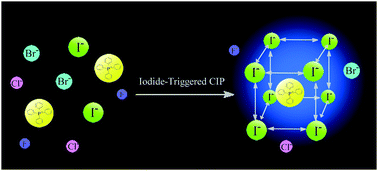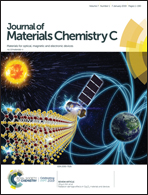A simple and efficient phosphorescent probe for iodide-specific detection based on crystallization-induced phosphorescence of organic ionic crystals†
Abstract
It is very challenging to develop luminescent detection methods for iodide ions due to their significant fluorescence quenching of general fluorophores induced by the heavy-atom effect. Herein, we reveal a unique crystallization-induced bright phosphorescence of tetraphenylphosphonium iodide (TPP I) and develop a novel time-gated detection method for iodide ions to minimize the autofluorescence from complex biological samples. Both the involvement of heavy iodide ion and accessible ionic interaction-induced organic crystals contribute to the accomplishment of a very high phosphorescence quantum yield (0.42) for TPP I. This specific iodide-triggered bright organic phosphorescence enables the development of a novel time-gated detection method for iodide ions in the luminescence turn-on manner and further offers an opportunity to establish a facile test strip for the visual detection of iodide ions based on solid-state phosphorescence on a solid substrate. Excellent performance of this probe in imaging iodide in live cells and intriguing use in double encryption illustrate the versatile and broad application prospects of highly efficient organic ionic crystals in various areas.



 Please wait while we load your content...
Please wait while we load your content...